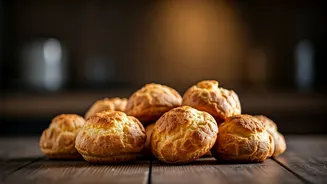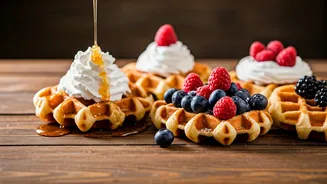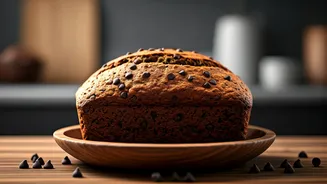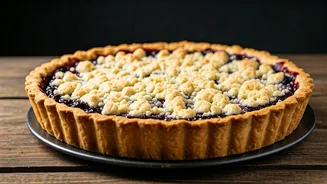Cheese Selection Matters
Choosing the right cheese is crucial for enhancing the flavor of your baked goods. Different cheeses offer unique characteristics that contribute to the final
product. For instance, aged cheddar offers a sharp, tangy taste, while Gruyère melts beautifully and adds a nutty flavour. Mozzarella delivers a mild, milky note, and Parmesan lends a salty, intense flavour. The type of cheese you select will significantly affect the outcome. For savory pastries and breads, you'll find that cheddar, Gruyère, and Parmesan are excellent choices, imparting rich and complex flavors. When it comes to sweet treats, cheeses like cream cheese and mascarpone can add a creamy texture and subtle tang. Consider the intended taste profile when selecting your cheese: do you want a bold, pungent flavour, a mild, creamy taste, or something in between? This decision forms the foundation for a successful baking endeavor. Experiment with different cheese varieties to identify what works best for each recipe.
Pastry Basics Explained
Understanding basic pastry techniques is paramount for achieving excellent results. This involves mastering the fundamentals of creating a flaky, tender dough. The key lies in maintaining cold ingredients and avoiding overmixing. Cold butter is essential; using chilled butter, often cubed, and working quickly, helps prevent it from melting into the flour, which in turn creates layers. When the butter stays in chunks, it produces steam during baking, which separates the dough layers and makes them flaky. The right fat to flour ratio is also crucial to the development of a well-structured pastry. Overmixing develops gluten, which toughens the pastry, making it chewy instead of tender. Gentle handling and light mixing until the dough just comes together prevents excessive gluten formation. Always chill the dough before rolling it out; this relaxes the gluten and ensures the butter remains cold, improving flakiness. The use of the right ingredients at the proper temperatures contributes to better pastry. Remember that the correct techniques ensure your pastries are light, crisp, and flavorful.
Gougères: French Delight
Gougères, a savory French pastry, are essentially cheese puffs, and mastering their creation is a rewarding skill. These airy, cheesy delights use a choux pastry base, which is made by cooking butter, water, salt, and flour on the stovetop until a thick paste forms. This paste is then combined with eggs to give the dough its structure. The cheese is then added, often Gruyère or a similar hard cheese, which melts into the dough during baking, providing both flavor and structure. The perfect gougères should be light and airy with a crispy exterior and a cheesy interior. The quality of your ingredients makes a big difference in the taste. It's important to bake them at a high temperature, around 200 degrees Celsius, which allows them to puff up quickly. Serve these warm, either as a snack, appetizer, or side dish. The combination of the crispy exterior, the cheesy interior, and the subtle flavors makes gougères a beloved treat.
Serving Ideas for Treats
Presenting your baked goods in a visually appealing way enhances the overall experience. Consider a variety of serving options to complement your creations. For cheese-based items, like gougères, consider serving them warm with a side of fruit preserves or a drizzle of honey. This combination creates a delicious contrast of flavors and textures. Offer a selection of cheeses to go along, pairing your baking creations with cheeses that complement their flavors. For sweeter pastries, arrange them on a tiered platter to create an elegant display. Add fresh fruits or a dusting of powdered sugar to enhance the aesthetic appeal. For a casual setting, serve pastries alongside a steaming cup of coffee or tea. To elevate a simple dish, consider adding a sprinkle of fresh herbs or a flavorful sauce. Serving ideas are not just about aesthetics but also about enhancing the flavors and creating a memorable experience.











